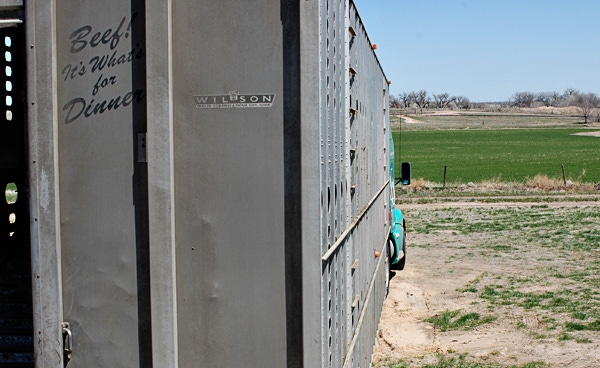Buyers took advantage of clearing weather and market channels to buy cattle, with markets supported by the rally in Lean Hog futures.
March 23, 2019

Calf and feeder cattle prices finally grabbed some traction this week, selling $2-$6 per cwt higher, according to the Agricultural Marketing Service (AMS).
“Most auctions noted demand was good to very good…It didn't matter what weight cattle were this week, they were in demand,” say AMS analysts. “From the grazing kind to the 1000+ pounders, feedyards were ready to take on some inventory after the last couple weeks of horrid weather in the Central U.S.”
Based on regional weighted-average USDA numbers, calf and feeder cattle prices got to within spitting distance or surpassed last year’s price levels for the first time since October.
Cattle futures added plenty of support.
Arguably, it was building record open interest and the extended sharp rally in Lean Hog futures that boosted cattle futures. Wonderments about the impact of the bomb cyclone were also part of the equation.
Feeder Cattle futures closed an average of $4.87 higher week to week on Friday ($1.67 higher in spot Mar to $6.37 higher).
There might be some pressure on cattle futures to start the new week. Deferred Lean Hog futures softened Friday. As well, the monthly Cattle on Feed report issued Friday will likely be viewed as bearish.
Feedlot placements up
Placements in feedlots with 1,000 head or more capacity were 1.86 million head in February, which was 2.20% more than a year earlier. That’s the most since 2000, according to Allendale, Inc. Ahead of the report, analysts there expected an increase of 1.5%. Most estimates ahead of the report expected a decline.
Marketings in February of 1.68 million head were 0.48% more than a year earlier, slightly less than pre-report expectations.
Cattle on feed March 1 of 11.80 million head were 0.69% more than the previous year. That’s the most since 2003, according to Allendale. Average estimates ahead of the report suggested a slight decline.
Fed cattle prices trend higher
Negotiated cash fed cattle trade was slow to develop but looked to end the week higher. Through late Friday afternoon, live sales were $1 higher in the Southern Plains at $128 per cwt., on light to moderate demand and trade. Although too few to trend, there were some early dressed sales reported in the western Corn Belt at $208, which was $2-$5 more than the previous week.
Week to week on Friday, Live Cattle futures closed an average of $2.22 higher (62 cents higher in spot Apr to $2.95 higher). Live Cattle open interest was a staggering 453,659 contracts on Thursday, with 201,865 in near June. That’s adding fuel on the way up, and it will going down, too.
Lighter carcass weights, due to the harsh winter, continued to provide support.
Average dressed steer weights for the week ending March 9 were 10 pounds lighter than the same week a year earlier at 871 pounds, according to USDA’s Actual Slaughter Under Federal Inspection report. Average heifer dressed weights were 9 pounds lighter at 814 pounds. Total beef production for the week of 488.0 million pounds was 3.4 million pounds less than a year earlier but total cattle slaughter was 7,889 head more.
For February, federally inspected slaughter of 2.45 million head was 1.56% more year over year, according to the monthly Livestock Slaughter report. Average dressed steer weights were 6 pounds less than a year earlier at 879 pounds. Average dressed heifer weights were 11 pounds less at 819 pounds. Beef production for the month of 1.99 billion pounds was 4.2 million more (+0.21%) than the previous year.
“April marketings will be an important indicator of the potential strength of the cattle markets through the summer,” says Stephen Koontz, agricultural economist at Colorado State University, in the most recent issue of In the Cattle Markets. “Weak marketings will suggest a backlog of animals.”
As of Feb. 1, he says the calculated inventory of cattle on feed more than 120 days of 3.99 million head was 12.2% more than the same time last year and 14.1% more than the five-year average.
Choice wholesale beef value was $2.10 higher week to week on Friday at $229.09 per cwt. Select was $1.30 higher at $218.64.
“The pressing issue in the beef market is one of increased domestic production in 2019 compared to 2018,” says Andrew P. Griffith, agricultural economist at the University of Tennessee, in his weekly market comments.
“Increased production leads to import and export implications. From the export side, softer export demand could lead to price struggles throughout the beef and cattle complex. From the import side, increased production of lean grinding beef will likely result in beef imports stagnating or declining slightly.”
Through the first 10 weeks of this year, Griffith notes that exports of beef muscle cuts were trailing last year by 18% for the same time period; 5% behind 2017. He says that likely has plenty to do with ongoing trade disputes and tariff rates that make U.S. beef less competitive in key markets.
About the Author(s)
You May Also Like





